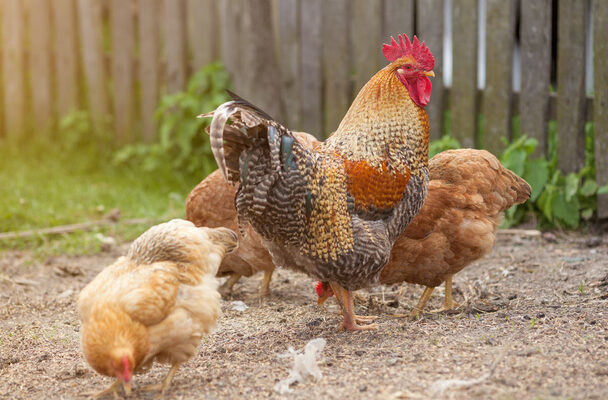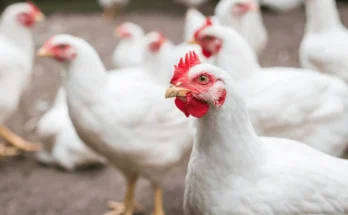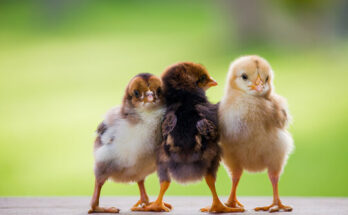Maximizing Egg Production: How Many Eggs Can a Hen Lay In A Day?
How many eggs can a hen lay in a day? This question has piqued the curiosity of many, from farmers to backyard poultry enthusiasts. Understanding a hen’s egg-laying capacity is essential for efficient management and care. The number of eggs a hen can lay in a day is influenced by various factors, including the breed, age, and overall health of the hen. In this post, we will delve into the fascinating world of egg production in hens, shedding light on the factors that contribute to the number of eggs laid daily. Whether you’re a seasoned poultry keeper or simply intrigued by the biology of these remarkable birds, this exploration will provide valuable insights into a hen’s remarkable egg-laying abilities.
Factors Affecting Egg Production
Understanding the factors that influence egg production in hens is crucial for poultry farmers and backyard chicken enthusiasts alike. These elements can play a significant role in the quantity and quality of eggs produced.
Breed Variations
Different breeds of chickens have varying capacities for egg production. Hens from breeds such as the Leghorn and Rhode Island Red are known for their high egg-laying capabilities, often producing more than 300 eggs per year. On the other hand, heritage breeds like the Silkie and Marans tend to have lower output, averaging around 150 eggs annually. When selecting hens for egg production, it’s essential to consider the specific breed’s tendencies to meet individual needs and expectations.
Age of the Hen
The age of a hen directly impacts its egg-laying abilities. Hens typically start laying eggs around 5-6 months of age, reaching peak production at 1-2 years old. As hens age, their egg output gradually declines, with a noticeable drop after the first two years. While older hens may still lay eggs, the frequency and consistency decrease, affecting overall production.
Environmental Influences
Environmental factors play a pivotal role in a hen’s daily egg output. Temperature, light exposure, and stress levels can all impact egg-laying capabilities. Hens thrive in moderate temperatures, and extreme heat or cold can disrupt their laying patterns. Additionally, exposure to natural or artificial light influences the regularity of egg production, with shorter daylight periods often signaling a decrease in laying. Moreover, stressors such as predator presence or changes in the coop environment can cause hens to reduce or cease egg production temporarily.
Understanding these factors is integral to optimizing egg production and ensuring the well-being of the hens. By considering breed variations, the age of hens, and environmental influences, poultry enthusiasts can enhance their understanding of egg production and make informed decisions to support the health and productivity of their flocks.

Nutrition and Egg Production
Nutrition plays a crucial role in a hen’s ability to lay eggs consistently and healthily. To ensure optimal egg production, hens require specific nutrients such as protein, calcium, and various vitamins. We have a full nutritional guide for poultry flocks here which you can refer to
Essential Nutrients for Egg Production
Protein is fundamental for egg production as it aids in the development of egg yolk and albumen. Alongside this, calcium is essential for the formation of the eggshell, contributing to its strength and quality. Additionally, various vitamins, including vitamin D, are necessary for the hen’s overall health and well-being, which in turn impacts their ability to lay eggs regularly.
Impact of Poor Nutrition
Inadequate nutrition can lead to decreased egg output and potential health issues for the hen. A deficiency in essential nutrients such as protein and calcium can result in irregular egg production and thin, fragile eggshells. This can be detrimental to a hen’s overall well-being and lead to complications in egg-laying. Furthermore, poor nutrition can impact the hens’ health, leading to a decline in egg production or even the cessation of laying altogether. Poor nutrition can have serious affects on a chickens gut health and its digestive system, which in turn will reduce egg output massively.
Understanding the relationship between nutrition and egg production is vital for maintaining a consistent and healthy output of eggs. Different breeds of chickens may have varying capacities for egg production based on their genetic makeup and the quality of their diet. Notably, some chickens are known to produce two eggs in one day, although it is relatively uncommon and can be attributed to unique biological factors. Therefore, ensuring a well-balanced diet for hens is essential in maximizing egg production and maintaining their overall health.
Double Egg Production
When it comes to egg production, there are instances where hens demonstrate the impressive ability to lay two eggs in a single day. Understanding the factors that contribute to this phenomenon provides valuable insights into the biology of hens and their reproductive capabilities.
Causes of Double Egg Production
The occurrence of double egg production can be attributed to various biological factors. One of the primary reasons is the accelerated maturation and release of multiple egg cells from the hen’s reproductive system. This can be influenced by genetic predisposition, hormonal fluctuations, and even environmental conditions. Additionally, some hens may have a genetic predisposition that leads to the release of two egg cells simultaneously, resulting in the production of two eggs within a 24-hour period.
Frequency and Commonality
While double egg production is not a common occurrence across all breeds, it is observed in certain breeds more frequently than others. For instance, some high-production breeds such as Leghorns, Australorps, and Rhode Island Reds are known to have a higher likelihood of laying two eggs in a day. However, it’s important to note that this phenomenon is still relatively rare and not typical for the majority of hens. Additionally, factors such as age, overall health, and environmental stress can also influence the frequency of double egg production in hens.
In addition to breed-specific tendencies, the nutritional status of hens plays a crucial role in their egg-laying capabilities. A well-balanced diet with sufficient levels of essential nutrients, particularly calcium and protein, can support optimal reproductive health in hens. Conversely, deficiencies in key nutrients can impact the hen’s ability to lay eggs, potentially reducing the likelihood of double egg production.
Overall, while double egg production may be a fascinating occurrence, it remains a relatively rare event that is influenced by a combination of genetic, physiological, and environmental factors. Understanding these dynamics provides a deeper appreciation for the complexities of egg production in hens.
Conclusion
In conclusion, while it is not uncommon for a hen to lay one egg per day, factors such as breed, age, and overall health can impact daily egg production. Providing optimal care and nutrition to hens is crucial for maximizing egg production. By ensuring that hens have access to a well-balanced diet, a comfortable living environment, and regular health check-ups, poultry farmers can support their hens in laying the maximum number of eggs possible. Understanding the factors that influence egg-laying capacity and taking proactive steps to support hens’ well-being can ultimately lead to a more efficient and productive egg-laying operation. We also recommend you read this article here about commercial chicken’s egg output, and how conditions negatively impact their egg production, and their well being.



